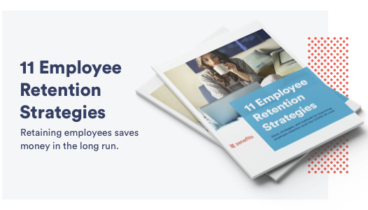It has been a turbulent time for restaurants. Hear from 3 restaurant operators from across the country on how their businesses are faring.
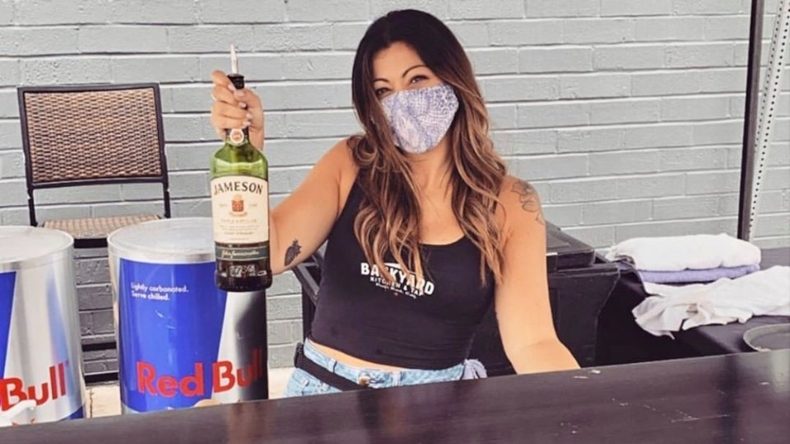
Here's what you need to know:
-
Bacaro Kitchen & Wine Bar in Houston, TX found it hard to enforce the local mask ordinance when trying to give customers the fine dining experience they’d enjoyed pre-COVID-19
-
Bacaro owner Bill Loveday appealed to his representatives in the hopes that they’ll support the Restaurant Act, a bipartisan bill that would provide grants to restaurants like his
-
Bindaas Foggy Bottom in Washington D.C. is feeling the impact of customers not back in offices and students not back at Georgetown
-
Nearby protests in early June and continued concerns about shared spaces may have also kept customers away
-
Chris Cox, COO of San Diego, CA’s OMG Hospitality Group, said that as restrictions lessened, patrons got a little bit more comfortable and didn’t want to follow the rules as much anymore
-
Cox also said that added expenses — such as barricades between tables, sanitizing stations, new chemicals, gloves — and keeping morale up are other challenges
Photo courtesy of OMG Hospitality Group Facebook page.
The need for social distancing to slow the spread of the coronavirus has hit bars and restaurants hard, especially in areas that experienced a surge in cases after partially reopening. In late June, Gov. Greg Abbott of Texas closed bars and scaled back capacity in restaurants statewide after a surge in cases. Some bar owners in the Lone Star State responded by organizing a “Bar Lives Matter” protest at the state capital.
After reopening restaurants and some other businesses, California Gov. Gavin Newsom ordered the temporary closure of bars, indoor dining, movie theaters, and museums on July 13. Meanwhile in New Jersey, indoor dining was going to resume last month, but Gov. Philip Murphy postponed the opening of indoor dining indefinitely after spikes in other states that had resumed indoor dining.
All this comes at a time of year when restaurants and bars can ordinarily count on brisk business, especially in summer tourist destinations. For restaurants planning to reopen or those that must abruptly close again after reopening, the inability to forecast staffing and food needs can damage already thin profit margins. Those steaks they ordered when they thought they’d need them may languish in the freezer after the restaurant changes course.
Some restaurants have pivoted to takeout and delivery, but for many, that’s not a strategy that can sustain them. Plus, it’s frustrating for staff who count on summer tips and may soon lose the federal unemployment benefits provided by the Coronavirus Aid, Relief, and Economic Security (CARES) Act at the end of July.
We talked to 3 operators about how they’re handling the rollercoaster of reopening and reclosing.
Bacaro Kitchen & Wine Bar in Houston, Texas
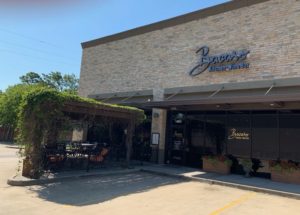 When Gov. Abbott allowed Texas restaurants to reopen at 25% capacity on May 1, management at Bacaro Kitchen & Wine Bar felt it was too soon for indoor dining. They continued to offer takeaway and delivery only. However, owner Bill Loveday said the restaurant saw an immediate drop in revenue once customers had the option to dine-in at other restaurants. They kept the dining closed even after Texas restaurants were allowed to operate at 50% capacity.
When Gov. Abbott allowed Texas restaurants to reopen at 25% capacity on May 1, management at Bacaro Kitchen & Wine Bar felt it was too soon for indoor dining. They continued to offer takeaway and delivery only. However, owner Bill Loveday said the restaurant saw an immediate drop in revenue once customers had the option to dine-in at other restaurants. They kept the dining closed even after Texas restaurants were allowed to operate at 50% capacity.
Finally, in early June, Baraco opened for indoor dining. But enforcing the local mask ordinance made it hard to give customers the fine dining experience they’d enjoyed pre-COVID-19.
“When people decide to go spend a couple hundred bucks on an evening, and you have to enforce them wearing their mask from the table to the bathroom … To do all that while exposing your staff to this virus and while you still lose money, it doesn’t make sense,” Loveday said.
“As of right now, we don’t really see any light at the end of the tunnel.”
Houston was experiencing an explosion in COVID-19 cases and Loveday worried about the safety of his employees. So, 2 weeks after reopening, they paused all operations, including takeout and delivery.
“As of right now, we don’t really see any light at the end of the tunnel,” Loveday said. “I just told my staff we’re going to pay them for another week.”
The restaurant has spent all the money they received from a Paycheck Protection Program loan. Thus, Loveday said they can’t stay afloat indefinitely. He’s appealed to his representatives in the hopes that they’ll support the Real Economic Support that Acknowledges Unique Restaurant Assistance Needed to Survive Act or Restaurant Act, a bipartisan bill that would provide grants to restaurants like his.
Bindaas Foggy Bottom in Washington, D.C.
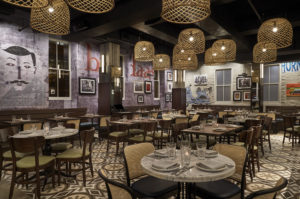 Mayor Muriel Bowser closed District of Columbia restaurants in March and allowed them to reopen for patio dining in May. Indoor dining was allowed to resume at 50% capacity on June 23. Ashok Bajaj, head of Knightsbridge Restaurant Group, opened several of his restaurants in accordance with these guidelines. One of them is Bindaas Foggy Bottom, which serves Indian street food.
Mayor Muriel Bowser closed District of Columbia restaurants in March and allowed them to reopen for patio dining in May. Indoor dining was allowed to resume at 50% capacity on June 23. Ashok Bajaj, head of Knightsbridge Restaurant Group, opened several of his restaurants in accordance with these guidelines. One of them is Bindaas Foggy Bottom, which serves Indian street food.
But customers in D.C.’s Foggy Bottom neighborhood didn’t return in a meaningful way.
“People are not back in the offices yet and that’s having an impact,” Bajaj said. “We’re close to Georgetown and they’re not back in town yet.”
He adds that nearby protests in early June and continued concerns about shared spaces may have also kept customers away.
So, after 10 days, Bajaj opted to completely close Bindaas again — at least for now.
“We’re going to reopen,” he said. “It may not be this month. It’ll probably be closer to the middle of August,” Bajaj added.
When cases decline and people return to nearby office buildings, that’s when he would consider reopening Bindaas. His other restaurants are operating at reduced capacity, reduced hours, and with social distancing.
“I’m certainly hoping that this shall pass and people’s confidence will be back and we’d be headed the right direction.”
Even with help from a PPP loan, “nobody can stay closed forever,” Bajaj said. “I’m certainly hoping that this shall pass and people’s confidence will be back and we’d be headed the right direction.”
He’s talked to friends in European cities where restaurants are open but customers are still wary of dining out. He anticipates that even as restaurants take precautions, it could be awhile before some consumers feel comfortable inside a restaurant.
OMG Hospitality Group in San Diego, California
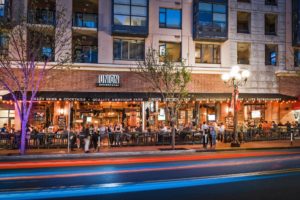 A week before the California order rolling back reopenings, San Diego County shut down indoor dining. For Chris Cox, chief operating officer of OMG Hospitality Group, that means 4 of the 6 restaurants in his company’s restaurant portfolio are operating with outdoor dining only.
A week before the California order rolling back reopenings, San Diego County shut down indoor dining. For Chris Cox, chief operating officer of OMG Hospitality Group, that means 4 of the 6 restaurants in his company’s restaurant portfolio are operating with outdoor dining only.
“Some of our locations have larger patios than other ones,” Cox said. “But we were able to take over the parking lot in one location.”
A 5th restaurant only had an indoor dining room, but they’re working to open the rooftop for outdoor dining.
“As the restrictions lessened, people got a little bit more comfortable and didn’t want to follow the rules as much anymore.”
Keeping up with ever-changing local and state requirements and explaining them to customers has been challenging. For instance, there was a time when area restaurants could legally serve alcohol but only if customers also ordered food. At first, customers were happy to comply.
“People have been cooped up for a very long time, so there was definitely a sense of excitement and the vast majority of people were so excited they would follow whatever rules you put in place,” Cox said. “As the restrictions lessened, people got a little bit more comfortable and didn’t want to follow the rules as much anymore.”
Despite loans, there’s still a rocky road
The business received some loans, but Cox said restaurants still have a rocky road ahead.
“With [paying for] the barricades we have between tables, sanitizing stations, new chemicals, gloves, and then starting and stopping with the amount of product we have to order … [it’s a challenge],” he said. “We were expecting a much better Fourth of July weekend, but weren’t able to reach capacity like we normally would.”
The lack of college students and summer tourists dealt another blow to area restaurants.
Dealing with the uncertainty of the past several months has been tough on management and staff.
“The whiplash effect is definitely the most challenging aspect of operations right now and trying to keep morale up when people are getting yo-yoed around,” Cox said.






